SAARC
SAARC
SAARC (South Asian Association for Regional Cooperation)
The South Asian Association for Regional Cooperation (SAARC) is a regional intergovernmental organization that aims to promote economic and regional integration in South Asia. The organization was formed with the vision of enhancing cooperation among South Asian nations and improving the socio-economic conditions of the people in the region.

Origin
The first SAARC Summit was held in Dhaka, Bangladesh, on December 7-8, 1985. The organization was officially established by signing the SAARC Charter by the founding members: Bangladesh, Bhutan, India, Maldives, Nepal, Pakistan, and Sri Lanka. Afghanistan later joined as the eighth member in 2007.
Headquarter: Kathmandu, Nepal
Members
Total members (8): Afghanistan, Bangladesh, Bhutan, India, Maldives, Nepal, Pakistan & Sri Lanka
Observer Status (9): Australia, China, the European Union, Iran, Japan, Mauritius, Myanmar, South Korea, and the United States
Objectives of SAARC
SAARC was founded on the principle of regional cooperation while respecting the sovereignty of its member states. Its key objectives, as outlined in the SAARC Charter, include:
- Promoting the welfare and quality of life of people in South Asia.
- Accelerating economic growth, social progress, and cultural development in the region.
- Strengthening collective self-reliance among South Asian countries.
- Promoting and strengthening collaboration in various fields, such as technology, culture, and education.
- Improving mutual trust and understanding among the nations.
- Encouraging active collaboration with international and regional organizations.
To access the charter, click here.
Institutional Machinery
SAARC functions through various institutions that facilitate cooperation among member states. Some of the important institutions include:
- SAARC Secretariat – Located in Kathmandu, Nepal, the Secretariat coordinates SAARC activities and ensures the implementation of decisions taken by member states.
- SAARC Summits – The highest decision-making body of SAARC, where heads of state or government meet to discuss and approve regional policies.
- Council of Ministers – Consisting of foreign ministers from member countries, this council formulates policies and reviews progress.
- SAARC Regional Centers – These centers focus on specific areas such as agriculture, energy, disaster management, and cultural cooperation.
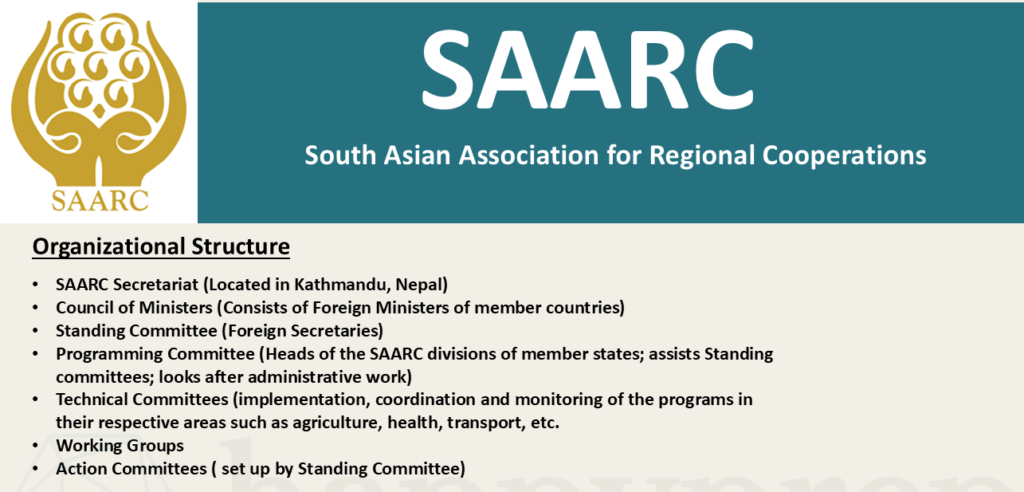
Key areas of Cooperation
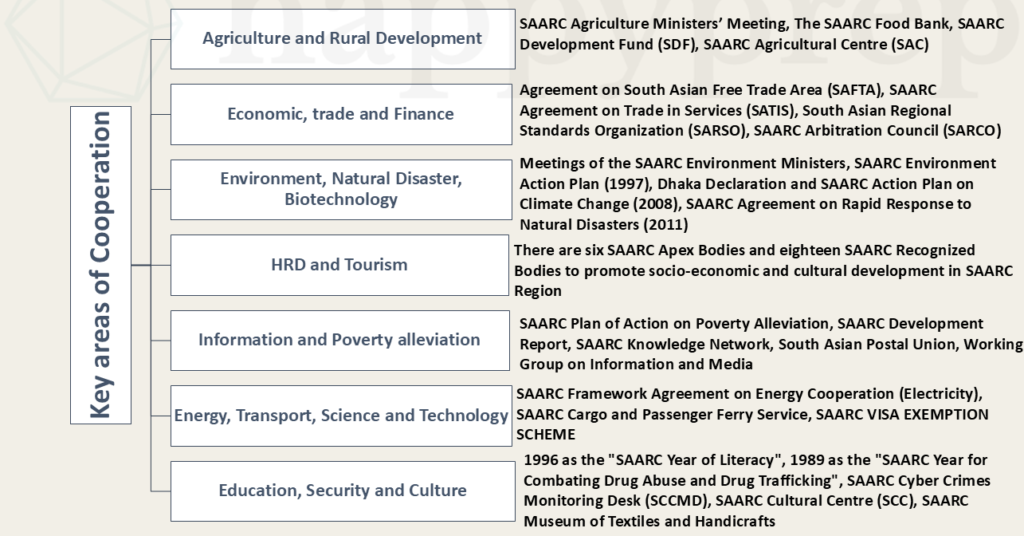
Challenges faced by SAARC
SAARC has faced several challenges that have hindered its progress:
- Political Tensions – Conflicts between member states, especially between India and Pakistan, have often disrupted SAARC’s functioning.
- Lack of Implementation – Many agreements and resolutions remain unimplemented due to bureaucratic and political hurdles.
- Economic Disparities – The varying levels of economic development among member states create difficulties in achieving common goals.
- Limited Intra-Regional Trade – Intra-SAARC trade remains low compared to other regional organizations like ASEAN and the European Union.
- External Influence – The role of external powers, including China and the United States, often influences regional dynamics.
Future of SAARC
To remain relevant and effective, SAARC needs to:
- Strengthen economic cooperation and fully implement SAFTA.
- Improve political relations among member states to foster trust and cooperation.
- Enhance regional connectivity through better infrastructure and transport networks.
- Promote digitalization and technology-driven initiatives.
- Increase engagement with observer nations to bring in resources and expertise.
Want to read some more articles?
-
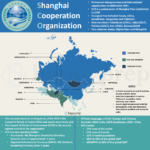 Shanghai Cooperation Organization (SCO): Origin, Members, Facts, etc for UPSC and other exams
Shanghai Cooperation Organization (SCO): Origin, Members, Facts, etc for UPSC and other exams -
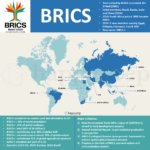 BRICS: Origin, members and others for UPSC, PSC & other exams
BRICS: Origin, members and others for UPSC, PSC & other exams -
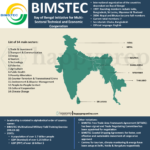 BIMSTEC for UPSC: Origin, Members & More
BIMSTEC for UPSC: Origin, Members & More -
 General Science for Competitive exams: UPSC, PSC, APFC, EO-AO, SSC, etc
General Science for Competitive exams: UPSC, PSC, APFC, EO-AO, SSC, etc -
 THE TRADE UNIONS ACT, 1926 for UPSC EPFO APFC/EO-AO, ALC, and Other exams
THE TRADE UNIONS ACT, 1926 for UPSC EPFO APFC/EO-AO, ALC, and Other exams -
 Understanding Macroenvironment: Marketing Environment in Principles of Marketing
Understanding Macroenvironment: Marketing Environment in Principles of Marketing -
 Understanding Microenvironment: Marketing Environment in Principles of Marketing
Understanding Microenvironment: Marketing Environment in Principles of Marketing -
Interjections in English
-
Conjunctions in English
Recruitment notifications update!
-
Recruitment 2025: Recruitment for Teaching Staff in The School of Planning and Architecture, New Delhi - Vacancy, Posts, Grade Pay, etc
-
Recruitment 2025: Vacancies in Inter-University Centre for Astronomy and Astrophysics (IUCAA)
-
Recruitment 2025: Recruitment on Deputation basis in National Anti Doping Agency (NADA)
-
Recruitment 2025: Various vacancies in Artificial Limbs Manufacturing Corporation of India (ALIMCO)
-
Recruitment 2025: Various vacancies in Land Ports Authority of India
Copyright© 2024 | All rights reserved | Made in India